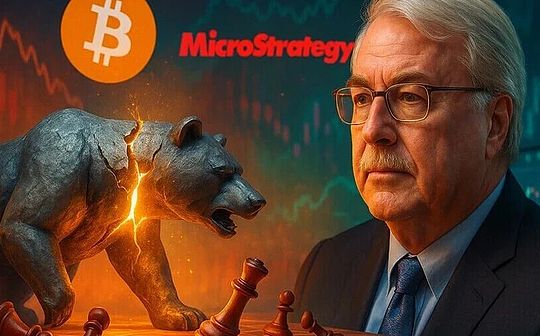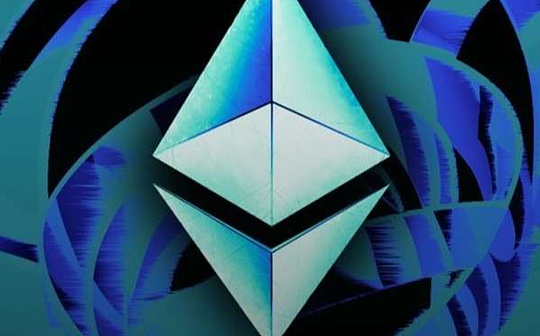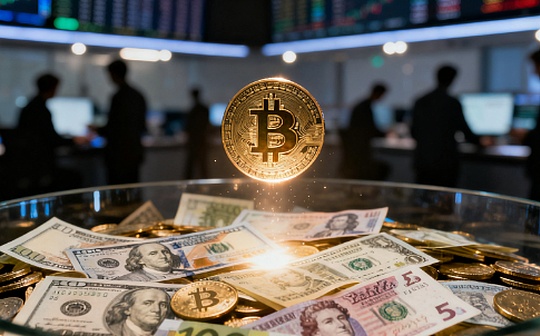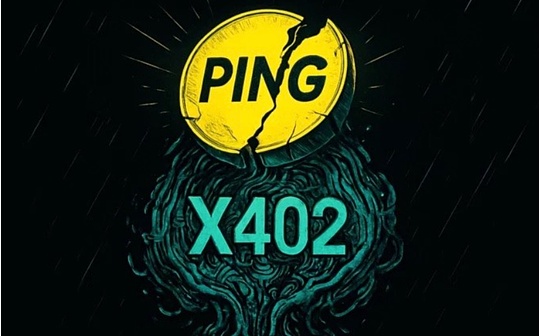
Author: Sleepy.txt


In the world of stablecoins, there is never a shortage of stories, but a lack of respect for risks.In November, something happened to stablecoins again.
The price of a “stablecoin” called xUSD crashed on November 4, falling from $1 to $0.26.As of today, it continues to fall, having dropped to $0.12, wiping out 88% of its market value.
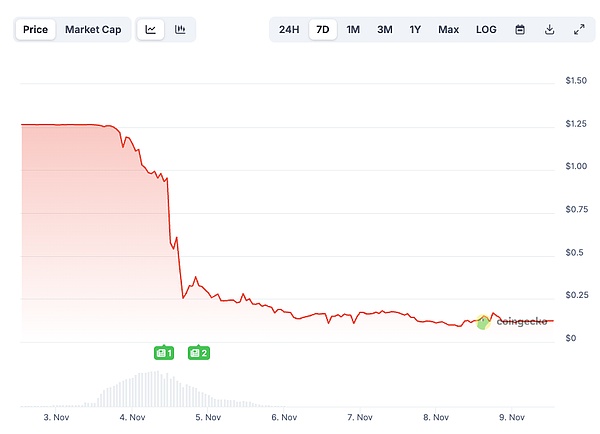
Source: Coingecko
What went wrong was a star project with $500 million in assets under management, Stream Finance.
They package their high-risk financial management strategies into the dividend-paying stable currency xUSD, which is said to be “anchored to the U.S. dollar and automatically earns interest.” In essence, it packages financial management income.If it is a financial management strategy, it is impossible to guarantee permanent profits. On October 11, the day when the crypto market plummeted, their off-chain trading strategy failed, resulting in a loss of US$93 million, equivalent to about 660 million yuan.This amount of money is enough to buy more than 40 100-square-meter houses in the Second Ring Road of Beijing.
A month later, Stream Finance announced a suspension of all deposits and withdrawals, and the xUSD price decoupled.
Panic quickly spread.Over the next week, more than $1 billion fled from various “dividend-paying stablecoins,” according to research firm stablewatch.This is equivalent to a run on all the deposits of a medium-sized city commercial bank in seven days.
Alarms are spreading throughout the DeFi financial market. In some protocols, the borrowing interest rate has even reached an astonishing -752%, which means that the collateral has become waste paper, no one will pay back to redeem it, and the market is in chaos.
All this stems from a seemingly beautiful promise: stability and high interest.
When the illusion of “stability” is punctured by a big negative line, we must re-examine which stablecoins are real stablecoins, and which ones are just high-risk financial management disguised as stablecoins. And why can high-risk financial management now openly call itself “stablecoin”?
emperor’s new clothes
In the world of finance, the sharpest fangs are often hidden behind the most beautiful masks.Stream Finance and its stablecoin xUSD are a typical example.
It claims that xUSD adopts a “Delta-neutral strategy.”This is a complex term originating from the professional trading world, which aims to hedge the risk of market fluctuations through a series of complex financial instruments, which sounds very safe and professional.The story told by the project is that users can obtain steady returns regardless of market ups and downs.
In just a few months, it attracted an influx of up to $500 million.However, once the mask is taken off, xUSD’s true operating model is full of loopholes, according to the tracking of on-chain data analysts.
The first is extreme opacity.Of the $500 million in assets it claims, less than 30% can be found on the chain, and the remaining “Schrödinger’s $350 million” is all operated out of sight.No one knows what is going on in this black box until the moment something happens to it.
Second is the astonishingly high leverage.The project party used only US$170 million in real assets to leverage up to US$530 million in borrowings through repeated mortgages and loans in other DeFi protocols, and the real leverage ratio exceeded 4 times.
What does this mean?You thought you were exchanging a firmly anchored “digital dollar”, and you were looking forward to a stable and high interest rate of more than ten points per year.In effect, you are buying LP shares in a 4x leveraged hedge fund, and you are invisible to 70% of the fund’s positions.
Behind the “stability” you think is that your money is undergoing ultra-high-frequency transactions in the world’s largest digital casino.
This is the most dangerous thing about this type of “stablecoin”.It uses the label of “stable” to conceal the essence of “hedge funds”.It promises ordinary investors the security of bank savings, but underneath operates high-risk strategies that only the most professional traders can master.
Deddy Lavid, CEO of blockchain security company Cyvers, commented after the incident: “Even if the protocol itself is secure, external fund managers, off-chain custody and human supervision are still key weaknesses. This time the collapse of Stream was not a code problem, but a human problem.”
This view hits the nail on the head.The root of the problem with Stream Finance is that the project team has carefully packaged an extremely complex, high-risk, and poorly regulated financial game into a “stable financial product” that ordinary people can easily participate in.
dominoes
If Stream Finance itself created a bomb, then Curator in DeFi lending products became the courier of the bomb, which eventually led to a series of explosions with far-reaching consequences.
In emerging lending protocols such as Morpho and Euler, Curator plays the role of “fund manager”.Most of them are professional investment teams, responsible for packaging complex DeFi strategies into “strategy vaults”, so that ordinary users can make deposits and enjoy profits with one click, just like buying financial management on a bank app.Their main income comes from extracting a certain percentage of performance fees from user income.
In theory, they should be professional risk gatekeepers to help users screen for high-quality assets.However, the business model of performance fees also paved the way for them to pursue high-risk assets.Because in DeFi, an extremely involuted market, a higher annualized rate of return means attracting more users and funds, thereby obtaining more performance fees.
When Stream Finance, an asset packaged as “stable and high-interest”, appeared, it immediately became popular in the eyes of many Curators.
We saw this worst-case scenario in the case of Stream Finance.According to on-chain data tracking, on protocols such as Euler and Morpho, many well-known Curators, including MEV Capital, Re7 Labs, and TelosC, have allocated a large amount of high-risk xUSD to their own treasury.Of this, TelosC alone has an exposure of $123 million.
More importantly, this configuration is not an honest mistake.There is evidence that a few days before the incident, many industry KOLs and analysts had publicly warned on social media that xUSD had transparency and leverage risks, but these Curators, who hold large sums of money and should be the first person responsible for the risk, chose to ignore it.
However, some Curators themselves have been victims of this packaging scam.K3 Capital is one of them.Curator, which manages millions of dollars in assets on the Euler protocol, lost $2 million in the explosion.
On November 7, K3’s founders spoke out on Euler’s Discord channel, revealing how they were defrauded.

Source: Discord
The story starts with another “stable currency” project.Elixir is a project that issues a dividend-paying stablecoin deUSD. It claims to adopt a “basis trading strategy.” It is based on this commitment that K3 allocates deUSD in the vault it manages.
But in late October, without the consent of any Curator, Elixir unilaterally changed its investment strategy and lent approximately 68 million USDC to Stream Finance through Morpho, changing from basis trading to matryoshka financing.
These two are completely different products.Basis trading is direct investment in a specific trading strategy with relatively controllable risks.Matryoshka financial management is lending money to another financial product, which is equivalent to adding another layer of risk on top of the original high risk.
When Stream’s bad debts became public on November 3, K3 immediately contacted Philip Forte, the founder of Elixir, and asked for guarantees of being able to liquidate deUSD at a 1:1 ratio.But Philip chose to remain silent and not respond at all.In desperation, K3 could only force liquidation on November 4, leaving $2 million in deUSD on hand.Elixir declared insolvency on November 6. Its solution is that deUSD in retail investors and liquidity pools can be exchanged for USDC at a 1:1 ratio, but deUSD in the Curator vault cannot be exchanged, and everyone is required to negotiate a solution together.
Currently, K3 has hired top lawyers in the United States and is preparing to sue Elixir and Philip Forte for unauthorized changes in terms and false advertising, demanding compensation for loss of goodwill and forcing the exchange of deUSD back to USDC.
When the gatekeepers themselves start selling risk, it’s only a matter of time before the entire fortress falls.And when the gatekeepers themselves are fooled, who can they count on to protect users?
Change the soup but not the medicine
This “packaging-diffusion-crash” model is so familiar in financial history.
Whether it was LUNA that evaporated US$40 billion in 72 hours in 2022 with the story of “algorithm stability and annualized growth of 20%”; or earlier in 2008, Wall Street elites packaged a pile of high-risk subprime mortgages into AAA-rated “high-quality bonds (CDOs)” through complex financial engineering, and ultimately triggered the history of the global financial crisis.Their core is surprisingly consistent, which is to complexly package high-risk assets to make them look like low-risk products, and then sell them through various channels to investors who cannot fully understand the risks behind them.
From Wall Street to DeFi, from CDOs to “dividend-paying stablecoins”, the technology is changing and the names are changing, but human greed has never changed.
According to industry data, there are currently more than 50 similar dividend-paying stablecoin projects operating in the DeFi market, with a total locked-up value of more than $8 billion.Most of them are using various complex financial engineering to package high-leverage and high-risk trading strategies into stable and high-interest financial products.
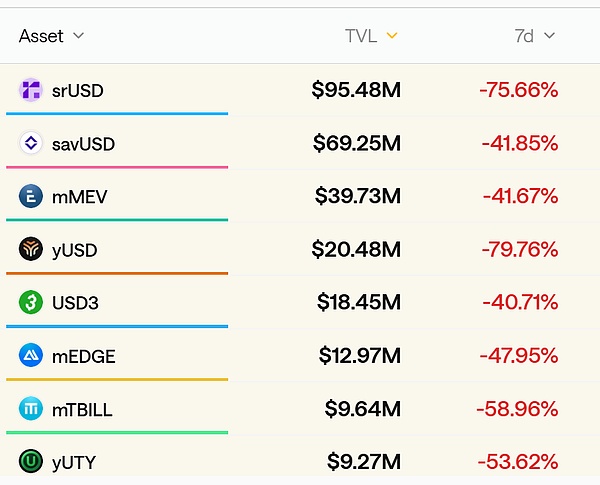
Source: stablewatch
The root of the problem is that we gave these products the wrong name.The three words “stablecoin” bring about the illusion of security and paralysis of risk.When people see stablecoins, they think of U.S. dollar reserve assets like USDC and USDT, not a highly leveraged hedge fund.
A lawsuit cannot save a market, but it can wake it up.When the tide goes out, we should see not only people swimming naked, but also people who had no intention of wearing swimming trunks in the first place.
$8 billion, 50 projects, the next Stream could show up any day.Before that, please remember the simplest common sense. When a product needs to attract you with ultra-high annualized income, it must be unstable.


